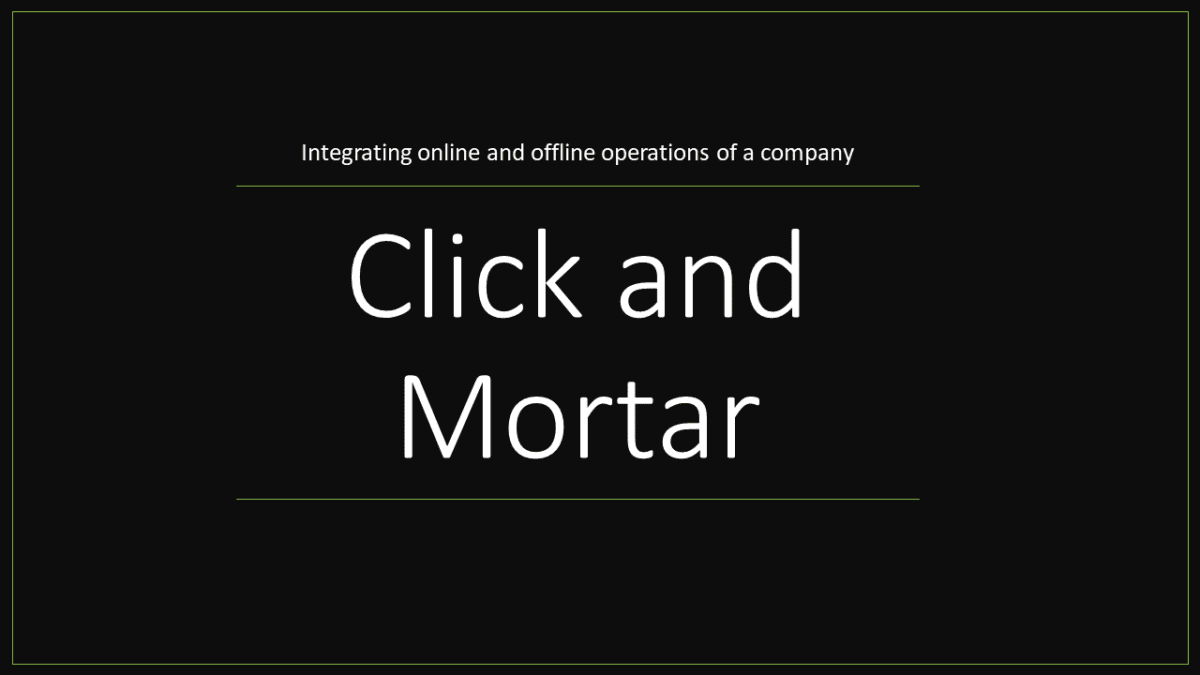Click and Mortar: What is it?
A click and mortar operation combine online and offline operations in an omnichannel eCommerce environment.
- Retailers offer their customers the option of shopping online on their websites as well as in their brick and mortar stores.
- It offers the convenience of online transactions, with goods being shipped within a short period of time after a purchase is made, as well as the ability to interact with the retailer in person.
- Historically, brick-and-mortar companies had only offline operations, which is the basis of the term “click and mortar.”
- To reach more customers, most traditional businesses are turning to click and mortar models with the success of internet companies like Amazon.
- In addition to providing enhanced shopping experiences for customers, click-and-mortar retailers like Nordstrom and Best Buy benefit from the model.
- With seamless online shopping, customers have the option of buying the products in person or through an online store.
- The flexibility, convenience, and choice offered by both options are great for customers.
- By using search engine ads and other marketing strategies, the company is also able to target online buyers, resulting in increased revenues.
The journey from bricks to clicks
- Consumers can browse and order products from brick-and-mortar stores as the e-commerce industry grows.
- Orders can be shipped to customers’ homes or to specific pickup locations near their workplaces or homes.
- For customers who wish to view offers while shopping at physical stores, retailers can provide Wi-Fi in-store.
- Using the customer data, the retailer can make recommendations and offer discounts based on the customer’s past purchases.
Designer clothing, perfumes, jewelry, and electronic products are also popular omnichannel products sold by retailers who follow a click-and-mortar business model.
- Before purchasing these products, many people want to feel them physically.
- If a customer wants a designer suit, for example, they would like to know what kind of fabric is used and what size suits them.
- The item can be purchased at the physical store or ordered online and delivered to a drop off location near the customer’s home or workplace if the customer wishes to avoid shipping.
The journey from clicks to bricks
- Online-only retailers, on the other hand, are setting up physical stores to enhance their customer experience as they integrate online stores into their business model.
- In order to provide their customers with the opportunity to see, touch, and test the products prior to purchasing, offline operations have been integrated into their model.
- The size of some products may differ from what customers were looking for, or they may be different from what they wanted.
- In addition to seeing online products, customers can experience them in a physical store.
- Going offline also reduces marketing expenses for online retailers.
- In order to bring traffic to their website, online-only businesses incur a lot of marketing expenses.
- A physical store, on the other hand, can bring in more customers without spending much on advertising for businesses that want to scale down their marketing costs.
- As most customers tend to recognize a brand with a physical location, physical stores can also help companies establish themselves as market leaders.
E-commerce business models: Pros & Cons
An eCommerce business should have a financial model, just like any other retail business (including brick-and-click). Traffic is typically first evaluated, followed by conversion rate, order value, variable costs, fixed costs, and so on, until profit and cash flow are calculated.
Click-and-mortar business model (omnichannel) advantages
Cost reductions
Inefficiencies such as labor costs, delivery costs, and inventory can be reduced by a click and mortar business.
Physical stores often have a large number of employees serving customers. When running an online shop, some of the processes will be automated so that the physical shop and online store can be managed by a few employees. Setting up an online store is also less expensive than opening a physical store.
Expanded market access
A broader market can be reached by operating both online and offline businesses. Physical stores can only be operated in a certain geographical area.
When businesses integrate online stores into their operations, they are able to reach a broad market outside of their local area.
The website provides customers with product information and allows them to place orders 24/7 without having to visit the store physically. Instead of going to another retailer, customers can visit the physical store for a first-hand look at the products.
Trust is improved among customers
Since customers can visit physical shops to try items first or return damaged items, click and mortar businesses have a better chance of earning their trust than online-only stores.
Customers may be hesitant to buy from a web-based business since they are unsure of the business’s location. Buyers who are skeptical of online transactions can also gain confidence through face-to-face interactions.
Value-added services
Through loyalty programs, logistics integration, and buyer guides, a click and mortar business can offer added value to the customer.
A business can offer discounts and direct offers to customers if it sells products online, as it has access to customer data such as email addresses and buying habits.
Customers can choose between picking up their products in person or having them delivered right to their front doors via logistics integration. Guides help buyers make informed decisions about products before they purchase them.
Challenges faced by brick-and-mortar businesses
In businesses that operate both online and offline, channel conflict is likely to occur. Business owners may focus their attention on the online business and neglect the physical store when the online store reports higher revenue.
Customers who prefer physical shops over online stores may leave the business as a result.


